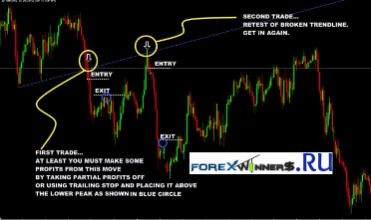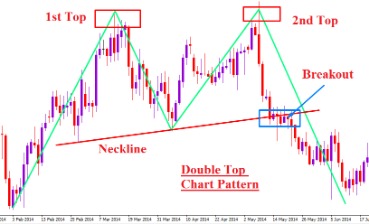Contents:

With that said, I tend to believe that a stop loss above the right shoulder is excessive. It unnecessarily and adversely affects your risk to reward ratio. Because of this, we’re only going to focus on the second approach. But even when waiting for the market to close below the neckline there are two entry methods to consider. By doing this, you mitigate the risk of having the market snap back on your position and stop you out for a loss. Which brings us to the second approach, and the one I prefer.

As head and shoulders patterns take some time to form, you need not check each chart daily. Frequent reviews are necessary only after the formation of the right valley. The classic head and shoulders pattern triggers a bearish reversal trade. It’s about “reading” the price action to understand the fundamental shift between buyers and sellers. The head and shoulders reversal doesn’t work because of the pattern itself. It works because of the way in which the highs and lows develop and interact with each other at the top of an uptrend.
Difference between Flags and Pennants
In the green circle, you see the moment when the price action broke through the upper level of the Flag. This confirmed the pattern, which creates a long opportunity on the chart. The green circle is the appropriate time in which to buy the GBP/USD Forex pair.
As a provider of educational courses, we do not have access to the personal trading accounts or brokerage statements of our customers. As a result, we have no reason to believe our customers perform better or worse than traders as a whole. The other way is to use the 20-day moving average as a stop. So if prices close below that moving average then you would close out your position. Recently, we discussed the general history of candlesticks and their patterns in a prior post. We also have a great tutorial on the most reliable bullish patterns.
What is Bull Flag Pattern & How to Identify Points to Enter Trade
This is typically marked by lower volume and tighter trading range. An advantage of the bull flag is that it suggests particular profit targets and allows for the setting of a tight stop loss, as explained below. I’ve now just learnt the bull flag trading guide and I’ll share my experience after practicing it.
The breakout equips us with precisely defined levels to play with. As you might have deduced from the name, the bearish flag was coined as a result of the fact that the price pattern resembles an upside-down flag flying from a pole. It is formed after a sharp drop in the price of a stock is followed by a period of consolidation.
The best way to illustrate a flag formation is by displaying it on a stock chart. Below is an example of a bullish flag on a daily chart. The protective stop loss is generally placed below the lower Flag “boarder” or below the bottom of the consolidation zone. A break below the flag will automatically invalidate the bullish flag pattern structure. This is quite obvious because the flag structure won’t look any more like a flag.
The Bull Flag Pattern Trading Strategy
To identify the bearish flag pattern, you should begin with locating the flag pole of the pattern. This will be either a sharp or steady drop in the price of the security and will act as the basis of establishing the trend. As with Flags, there are two types of Pennants – bullish Pennant and bearish Pennant. They are traded the same way as the Flag and the target rules are absolutely identical.

You can see a list of supported browsers in our Help Center. Some of the examples above show a complex head and shoulders. When the right shoulder is lower than the left shoulder, consider it a sign of greater profit potential.
Be sure to take note how each structure forms in its own unique way yet is still highly effective at signaling a reversal. So to start wrapping things up, here are a couple more examples of the head and shoulders in action. Note that I measure from the top of the head directly below to the neckline.
Alternatively, you can wait for a when is a bull flag invalidated and only enter after a pullback that retests the flag. However, there is a big risk with this type of chart patterns that you won’t see any pullback once the breakout happens. If you’re just getting used to the bullish flag pattern, just zoom out a little bit on your chart because it can make a really big difference. Zooming out your charts you will be able to spot the bullish flag pattern much faster. Flag formations are all quite similar when they appear and tend to also show up in similar situations in an existing trend.
- However, we need both shoulders and the head of the pattern before we can identify the neckline.
- On the other hand, lackluster volumes when the price breaks above the bull flag’s upper trendline increase the possibility of a fakeout.
- If you do not agree with any term of provision of our Terms and Conditions, you should not use our Site, Services, Content or Information.
- A doji is a trading session where a security’s open and close prices are virtually equal.
Usually, there is a surge in volume as the stock builds the flag pole. Volume then tapers off precipitously as the stock price consolidates. The breakout from the bull flag often sees another increase in volume, although volume may not increase dramatically.
A https://g-markets.net/ is a symmetrical triangle that is formed in a horizontal consolidation pattern. As the pennant narrows into its apex, it can be difficult to determine which direction it will resolve. A bull flag doesn’t typically form an apex, nor is it completely symmetrical.
Continue Learning
Instead of developing parallel lines to form the flag, the lines converge during the consolidation period. As you’d expect, the pennant looks like an elongated triangle with the 2 sides of the pennant equal and meeting at the tip. The formation of both the flag pattern and the pennant may take weeks to form. On the other hand, lackluster volumes when the price breaks above the bull flag’s upper trendline increase the possibility of a fakeout. In other words, the price risks dropping below the upper trendline, thus invalidating the bullish continuation setup.


